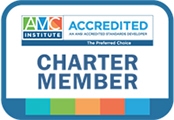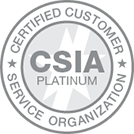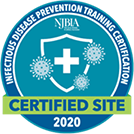My wife, Penny, and I love watching the show Chopped on the Food Network. For those of you who are unfamiliar with the show, four professional (sometimes, amateur) chefs compete in three rounds — appetizer, entrée and dessert — using a mystery basket of four, often “unusual” ingredients to make their dishes. They have access to a pantry and fridge with plenty of other ingredients, but they must use the four in the basket at a minimum. Each round is timed, so there’s a lot of pressure. Then, three professional chefs, all with their own shows on the Food Network, taste and judge the results. One chef is “chopped” each round, until there’s one champion left standing with the $10,000 prize. It requires thinking quick on your feet and lots of creativity to reign supreme at the end of the competition.
I was watching the show recently and got to thinking about how it might relate to what we do as association management professionals. I remembered a program cooked up a few years ago (pun intended!) by Lauren, the director of marketing for our legacy client, the Juvenile Products Manufacturers Association (JPMA), a group I used to manage as executive director. Lauren was inspired by the NCAA’s Final Four basketball tournament rather than Chopped, but the concept was the same. My recollection was that she pitted eight of JPMA’s member benefits in a bracket against one another, with JPMA members voting for their top choices. She started with eight benefits and there were three voting rounds. The winner was announced at JPMA’s Annual Meeting in Washington, DC.
The point of this is to ask you, association management pros, are you consistently evaluating membership offerings from your organizations? Do you look for those that are profitable to the organization or that deliver the best value to members? And are you looking to “chop” the sacred cows —the programs that have lingered forever and that the board just won’t chop because, well, it used to be a great benefit and if we just promote it better they will come?
The other thing you should be doing is demonstrating in real dollars the value of what you offer your members. I’ve heard Ed Rigsbee speak a number of times and he stresses the need to sell the benefits, rather than the features. As an example from Ed’s work, if your organization provides government advocacy, put the value of this service in terms of money saved by them in avoiding costly legal problems by helping them be in compliance.
Remember, too, the lessons from 7 Measures and the Critical Concept of Aligning Your Products and Services with Your Mission. As my colleague, Sue Pine, recently wrote, “Remarkable associations are willing to take risks and to experiment with new products and services to find the right mix that is aligned with their missions. They are also willing to readily admit failures, learn from them, and move on.” In other words, they are willing to “chop” those benefits and services that don’t quite cut it. Are you?




